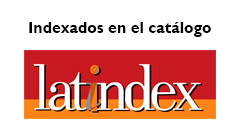
How to make a case report
Adaptation of Milos Jenicek (1999) Clinical Case Reporting in Evidence Based Medicine. Butterworth-Heinemann editions – London by Sergio Uribe.
Types of case report presentations
- Case report
- Case report with bibliographic review
- Report of a series of cases
- Systematic case review
Estructure
| Title | Describe intervention> Results> Population |
| Abstract | Reasons and motivation of the report: why are you are reporting this? Background: What is the context? Important
findings: what was found? Conclusions: what does all of the above mean? |
| Introduction | Definition of the topic (problem, disease, clinical activity). General context (relevant knowledge, current clinical situation and challenges). Problems that the report can answer or gaps in the knowledge that it can fill. Objectives and
justification of the report. |
| Case presentation | Situation, context and trigger factor of the report. Initial state of the patient (clinical and paraclinical). Evolution of the clinical and paraclinical spectrum and gradient of the case.
Diagnostic, therapeutic, care and patient support. Expected results of the actions carried out or omitted. Unexpected results or events. |
| Discussion and conclussions | Discussion of observations and results. Contribution of the report to the fundamental knowledge of the problem.
Proposals and recommendations for practice (clinical decisions) and for research (new hypotheses generated by the case). |
| References | Milos Jenicek (1999) Clinical Case Reporting in Evidence Based Medicine. Ediciones Butterworth-Heinemann – London. |
All abstracts have to be prepared according to the following points:
- Use any version of Microsoft Word, A4 page format with margins of 2.5 cm and New Time Roman typeface with single line spacing. The format must be saved from MS Word (Doc) or preferably in Rich text format (RTF). The total space must not exceed one
- The title of the work will be set at a size of 16 points and will consist of no more than 20
- The name and surnames of the authors and the institutions to which they belong shall be recorded. The size of the lyrics will be 12 pts. for the names of the authors and 10 pts. for filiation. Although there is no limit to the number of authors, there will be a limit of six to facilitate
- Three to ten key words will be provided in English and
- The limit of words of the body of the summary is of 250 without including the title, nor the names and affiliations of the authors. The font size in this case will be 12 pts.
- The summary should briefly reflect the structure of the complete work and will cover: Introduction and objectives; Methods and Materials; Results and conclusions. Do not include images, tables, formulas, complex symbols,
bibliographic citations, or acronyms and abbreviations (except for units of measurement) in the body of the summary.
- Include English translation of the abstract and the keywords, with the same structure.
- Abstract in English, with a maximum length of 250 words and written entirely in italics. It is recommended not to use automatic translators. The Editorial Board will ensure the quality of the abstract in
- Keywords, in English and in italics. A maximum of 8 descriptors will be entered. The Editorial Board will ensure the quality of the wording of the keywords in
- This structure (objectives, methodology, etc.) will not be explicitly reflected in the writing of the summary, which must be written in impersonal style. The evaluation of the article will take into account the clarity of the presented summary.
- The best work will be published in the Global Journal of
- Please send the original by email to the emails: E-Mail: info@aepromo.org
This post is also available in:  Español (Spanish)
Español (Spanish)


























